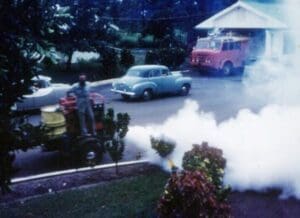Long Gone DDT Pesticide Linked to Increasing Rates of Cancer

Conclusive new research titled “A Prospective Study of Organochlorines in Adipose Tissue and Risk of non-Hodgkin’s Lymphoma,” published in the journal Environmental Health Perspectives suggests a very strong link between organochlorine pesticides and the risk of developing non-Hodgkin’s lymphoma.
Conducted by researchers at the Danish Cancer Society’s Institute of Cancer Epidemiology, the study identified eight organochlorine pesticides including DDT and ten polychlorinated biphenyl congeners (PCBs) in the fat tissue of 512 individuals—half with NHL and half without over a four year period.
The study results concluded that there was an increased risk of NHL in those individuals with higher levels of DDT, cis-nonachlor and oxychlordane found in their fat tissues. Tissue samples were collected as much as 15 years prior to the development of NHL in some of the subjects suggesting that the risk of developing the often-deadly cancer increases and strengthens over time after exposure to the toxic pesticides.
Organochlorine pesticides like the toxic and once widely used DDT, have been banned in many countries for several decades, but they are still found in concentrations in air, water and soil samples, contributing to a number of human health and environmental risks. They’ve been linked to birth defects, diabetes and neurological disorders as well as cancer. Long-term exposure to DDT can adversely affect the liver and kidneys, lead to tremors and seizures and high doses can cause death.
Non-Hodgkin’s lymphoma is a one of the fastest growing cancers affecting as many as 1 in 50, according to the American Cancer Society.
Keep in touch with Jill on Twitter @jillettinger
Image: kenhodge13

